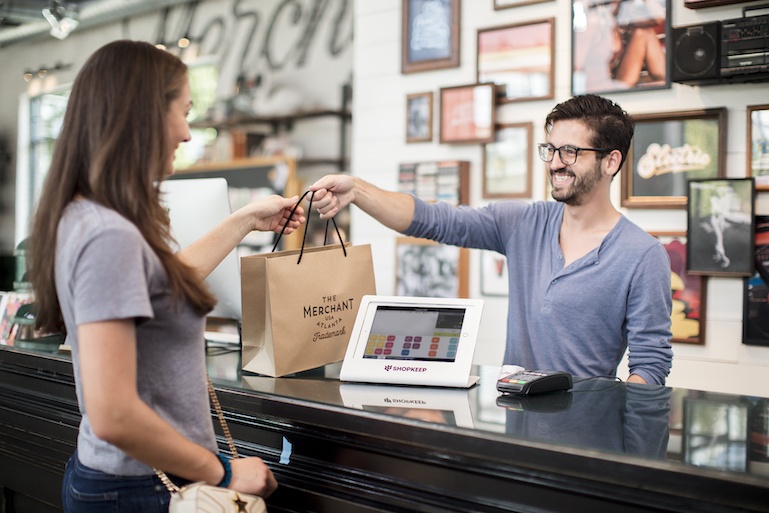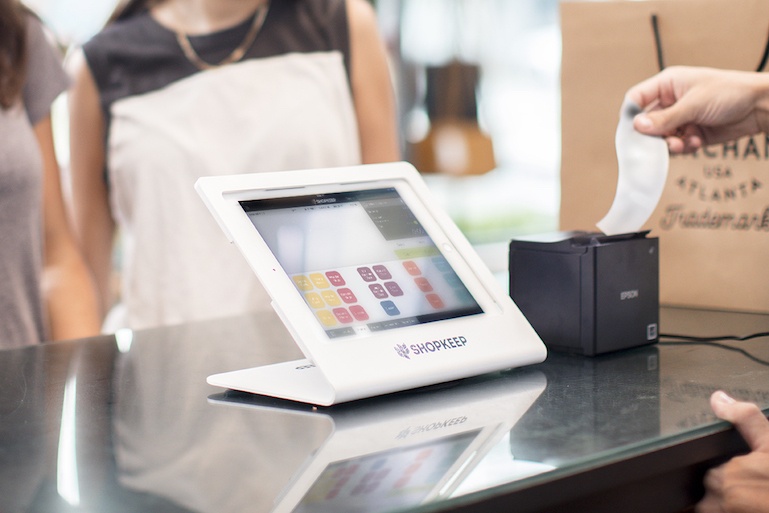
7 Easy Ways to Improve Your Retail Shopping Experience
Improving the retail shopping experience is the key to sustained success.
For brick and mortar retail stores the good old days are no more. Before the internet age, store owners and managers were able to train the staff and run their stores with an almost exclusive focus on one thing, making the sale. In the past for retailers, unless they were a luxury brand that was charging a premium price, excellent customer service was often a secondary consideration. This was made possible because, for the most part, retailers held all the cards.
Customers had very little access to information beyond what the salesperson told them. Consumers were easy prey for high-pressure sales tactics and psychological sales tricks. Consequently, customers often made bad purchasing decisions and working in retail became almost synonymous with a used car salesman in the hierarchy of people’s trust.
The facts are that the Always Be Closing (ABC) sales techniques that were once the bread and butter of many retail establishments are not only ineffective today, they are counterproductive and have been for some time.
Wealth of Information
With the advent of the internet, consumers began to realize that by educating themselves they could be empowered when shopping. For the first time, they could tell a salesperson, “I don’t want that one. According to this review site, that forum, and this other discussion board, the other one is a better product at a lower price.”
All of a sudden there were thousands of review sites on the internet covering every possible product category. More importantly, a wealth of information became available on every type of retail store you can imagine. Consumers quickly became not only knowledgeable about the goods they wanted to buy but the places where they could buy them.
More Bad News: Online Shopping
This was all before online shopping. Today, those working in retail sales are not only facing consumers who are at least as knowledgeable about their products as they are, but they also have to compete with the convenience of online stores. This places them at several disadvantages.
An online store doesn’t have to carry much of the overhead that is a normal part of operating a brick and mortar retail store. Sales/waiting staff, utility bills, workman’s compensation insurance, sales tax, and a host of other expenses are all factors that place old-fashioned retailers at a disadvantage. This often allows online stores to price products lower than their brick and mortar counterparts. Not to mention that the 24/7 nature of online shopping, along with the fact that there are no pushy salespeople involved, make online stores and ecommerce a far more appealing way to shop for many.
SEE ALSO: How to Integrate Your POS System with a Website
The Small Retailers Advantage
The one advantage that traditional retailers offer over online shopping is a personalized and warm shopping experience. As people have become more technologically focused, they have been left with a shortage of interpersonal contact. For you, the small to medium size retail store owner, this is more than just good news — it is a boon for business.
Online stores can never match your company. This is also an area that the big box stores generally fail at. The massive chains, out of necessity, depend on substantial sales with minimum overhead just to support their corporate infrastructures. Placing minimum wage workers under pressure is not a good way to promote good customer service, and online shopping has all but destroyed the convenience advantage the giant retailers once enjoyed. Why drive to Walmart or shoot over to Target when you can have the same items delivered to your front door at the same price (or less).
As evidenced by the immense number of chain store closings taking place and the rising survival rate among small to medium business, this is becoming the age of both the online retailers and smaller physical store owner. Each is meeting customer expectations in their own way.
How to Improve Your Retail Shopping Experience
Of course, the key to not only competing but excelling in this new business climate is to create a retail customer experience that makes people prefer in-store shopping over the convenience of online shopping. That means eliminating as much of the hassle associated with shopping in a brick and mortar store as possible and providing them with a personalized shopping experience that they can’t get anywhere else.
There are several ways to do this but we will focus on just a few that we feel will be of the most significant benefits to you and your business.
1. Minimize Lines
One of the byproducts of today’s ‘get it now’ mentality is people simply are not going to wait in long lines. By reducing line length, not only do you make your shoppers happier, but you decrease the likelihood that they’ll get frustrated and leave before completing their purchase.
Installing a modern point of sale (POS) system that is both fast and simple to use can go a long way toward speeding people through checkouts. For even quicker service, sales associates can be equipped with iPad systems only enabling customers to make purchases away from the traditional checkout line. Modern tablet-based systems also often support e-wallet or mobile payments methods that facilitate faster checkouts.
Beyond these two powerful advantages, today’s POS systems offer marketing, customer relationship management, and reporting tools that help you create a truly personalized shopping experience for your customers.
2. Take Care of More Than Just the Customer
There are two types of people you can cater two besides the person you’re hoping will make a purchase in your store. One is co-shoppers. That is the husbands, wives, boyfriends, and girlfriends of your actual customers. The other is kids. Both can be a point of irritation and pressure that can have buyers fleeing the store before they make a purchase.
Provide a relaxed shopping experience for your customers by setting up comfort stations for the people with them. If you’re selling women’s clothes a few comfortable chairs and a TV or a few magazines can prevent a lot of eye rolling, huffing and ‘it doesn’t matter pick one’ situations. If you’re selling fishing tackle, the same but with different focused reading material can prevent foot tapping and watch watching. Both equate to higher sales per-visit.
As for the kids. It may be entertaining to watch a parent trying to try on clothes while their little ones are terrorizing other customers or pitching fits. This is not very conducive to high-profit margins. Providing some activities to keep the kids occupied so mommy and daddy can shop in peace will earn you some serious gratitude points and repeat customers. Even if it is just a few boxes of crayons and some scratch paper, you will be amazed at the increase in sales per customer and total sales it can provide.
3. Train Store Associates to Care
According to Dr. Sean Guillory, the two top complaints heard from retail shoppers both involve the behavior of the sales staff. Teach your staff how to engage with customers by being active listeners, being tactfully honest, and making sure they understand that building a relationship is more important than making an immediate sale.
People will forgive you for an honest answer they didn’t want to hear but not for letting them leave your store looking like a clown. Trust will make yours the store they return to over and over again, and tell their friends about.
SEE ALSO: The Small Retailer’s Guide to Successful Staff Training
4. Embrace New Technology to Track, Entertain, and Inform Customers
Place screens by your checkout counter and registers with sponsored in-store video and infotainment to brighten up the least enjoyed part of the shopping experience; standing in line. These screens can also be used to collect anonymous attention-based data and drive upsells. Ads can even be cross-contracted with fellow retail merchants possibly creating an extra income stream.
Another area that new technology can be pure gold takes us back to what we were discussing about POS systems. Modern systems can gather all types of information on your customers while they are making purchases. This can include email addresses and social media activities.
Just because you are running a brick and mortar store doesn’t mean you can’t use the internet to your advantage. Customized offers, recommendations, and discounts can be offered to customers based on their buying history, and even customer loyalty programs can be implemented with just a few clicks of a mouse and maintained almost entirely on automatic.

5. Engage All Five Senses
One advantage that a traditional retail establishment has over an online store is that the shopping experience is more than just visual. Make it easy for customers to see and touch your products. Make sure your store has a pleasant aroma and don’t underestimate the value of having the right background music.
You don’t want to lull your customers to sleep, at the same time, you don’t want to drive them out of the store. According to the University of California in Santa Barbara, having the right music with a slow but not too slow tempo encourages patrons of both retail stores and restaurants to browse longer and spend more. Isn’t that the name of the game?
Remember your efforts are towards creating an omnichannel customer experience that transcends the bounds of just shopping and makes visiting your brick and mortar retail store an event that makes it worth the extra effort to leave home and visit you.
6. Embrace Your Competition
Just because you own or operate a traditional brick and mortar store doesn’t mean you shouldn’t be prepared to embrace the internet. You would be foolhardy not to. Yes, you should have social media channels to communicate with your customers through, and you need to make sure your store is easily located on Google maps and all local online store locators, but you can go way beyond that with very little investment in time or money.
It is easy to set up an online retail store to complement your retail space. As a local merchant, you have a few advantages that many online retailers won’t have. One is that your customers will already know who you are and be familiar with your sterling reputation. Another is that focusing on creating a seamless shopping experience between your online and offline business can offer regular customers perks like same-day delivery on items they decide to buy after getting home. Even in-store pickup can be enough to separate you from the big box brands.
By having a presence both on the internet and in the real world, you make it easier for new customers to find you and old customers to keep buying from you in whatever mode they feel most comfortable with at the time.
7. Keep Your Employees Happy
As Sir Richard Branson has oft been quoted, “Take care of your employees, and they will take care of your business.” Truer words have never been spoken about the nature of retail sales. Remember above where we talked about customer complaints. Happy employees lead to satisfied customers, and happy customers lead to higher sales more word of mouth advertising and ultimately to a successful business.
Take time to recognize your sales associates. Make them feel appreciated and part of a team that is playing together to create something wonderful, and they will do just that for you and your customers.
This is in no way a comprehensive list of ways to improve your retail shopping experience. There is simply to vast an array of store types to provide that with any authority, but the few ideas given here are a good starting point for almost any type of business.
Think about your own pain points when shopping and be sure your store doesn’t commit the same mistakes. Ask yourself why you shop the places you do and be sure you are providing as good or better in your own store. And lastly, one of the easiest ways to improve your customer’s shopping experience is to ask them what would make it better. They are the ultimate authority on what they like.
Want to try ShopKeep for yourself?
Just answer a few easy questions.
Need help finding the right point of sale?
Just complete the form. We’ll call you right back to explain how ShopKeep can work for you.
Hit the ground running.Sprinting, in fact!
Read our free, comprehensive guide, Small Business 101, to learn all you need to know about starting a thriving business.

